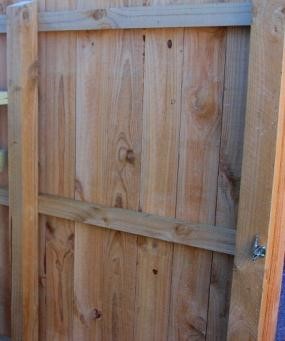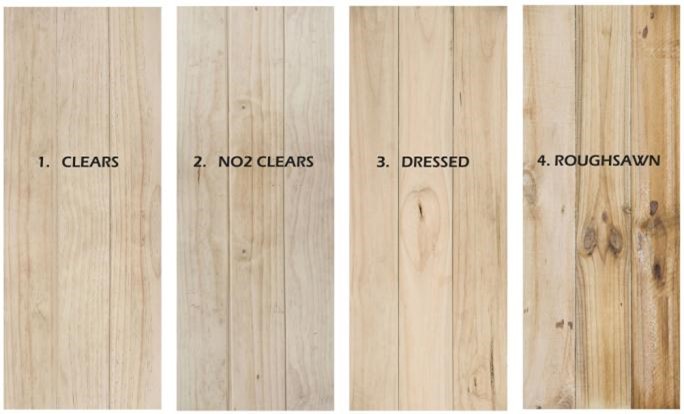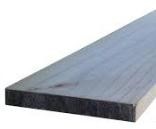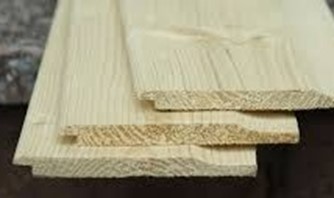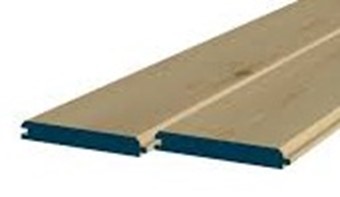Wooden fences NZ, wooden gates & fences, wooden fences design, fence & gate painting, retaining walls, landscaping, decks
Auckland Fences, based in Auckland, New Zealand, is a fence building company that can build most styles and designs of wooden fence for all your residential fencing needs.
Auckland Fences have been in business, building timber fencing, for over 6 years, building quality fence panels, trellis fencing, gates, retaining walls, decks, landscaping and more throughout the Auckland region.
Our prices are very competitive and our service is friendly, so please get in touch with Auckland Fences to discuss your requirements.
What we do differently:
We offer quality fencing at competitive pricing. Our professional team provides an outstanding overall customer experience. From site visit to getting your quote out to you within 3 days we ensure that you are satisfied with your fences selection and we confirm that with a design confirmation document to you before commencement of your fence.
Once your job is programed in for a potential start date according to your place in the queue you will receive an e-mail from our office communicating the expected start date and to confirm off any last minute changes that you might have. Our office sends out weekly follow up e-mails to keep you informed of where your job sits (this might be influenced by the weather and possible job blow outs).
Our installers follow good practice that means we are happy to stand by a 5-year workmanship warranty. If because of poor workmanship your work fails we’ll be there to fix it.
Timber fences are a great addition to any property. Based on the above analysis of the fencing timber customers can understand there is a range of benefits in any fence chosen. We encourage customers to look at a budget and design basis. What is the outcome the customer is looking for, and what is the budget they are willing to put beside it. We encourage finding a design that fits the image the customer is after, and then matching the timber grade to their desired budget.
- Design of fence
The design of the fence can be matched to any desired look a customer can bring us. Once the design is decided we will put the specifications into that design, based on the grade of the timber, the finish desired, and any other expectations
- Choice of Grades of timber
In general Auckland Fences references 3 grades of timber. This is based from a practical design structure. Auckland Fences 3 grades are named:
Movement and shrinkage – Roughsawn timber and our merch grade timber will be installed with knots, and as it naturally is provided by the supplier. As below, there is a level of moisture in the timber also on arrival on site, which the clients needs to expect will dry upon installation.
Movement and drying on installation is a standard expectation., and the client must realise that they are choosing a natural product in timber that has its benefits and weaknesses. Palings can shrink upwards of 5%, posts can twist, rails can bow. All of this is an industry wide expectation.
Roughsawn – utilising fully roughsawn timber, which means there are no smooth edges. In most instances this is equivalent to Merch Grade as in reference to the table below.
Dressed/Machine Gauged– This is Machine gauged (smooth) timber that is still wet with treatment, and often will still have some knots in the timber in most instances. Our shiplap palings in this grade normally are clear one side with knots on the rear.
Premium – This is clear timber with no knots, and has been kiln dried which means very little movement from the elements. In most instances this is similar to Dressing Grade or above as in reference below.
Example images of grades of timber we use
For reference purposes only to display defects and knots in timber where necessary. No piece of timber is the same as another, therefore please expect variations in your timbers
- Treatment
All installed fences are made of treated timber, that arrives to the sites delivered by the suppliers in a wet, treated state. Timber that is treated and not been previously dried, will dry on installation. This will mean there is some shrinking, movement and warping over time, as the sun and elements work into and out of the natural products. This can at times include significant drying and warping of the timber, that is neither a fault by Auckland Fences, or a fault of the product, it is in its nature a quality of the product being installed.
If a client has specific requirements, expectations or questions around the level of movement that can come from their chosen design, it is their responsibility to raise that with Auckland fences, so that agreement can be made on alterations needing to happen to the design.
Auckland Fences uses timber that has been treated under one of 2 processes, commonly referred to as CCA, or MCCA treatments. These are commonly used treatments and adhere to New Zealand timber standards for utilisation in building environments.
It is only Kiln dried timber that will be installed dry, so that it does not dry once installed. This saves the majority of the movement in that timber.
Profile of paling
There are differing widths of palings, with the standards in roughsawn based off 150mm, or 100mm wide. In Machine gauged that is 140mm and 88mm. The profile of palings, references the shape and size of the paling, that is installed on the fence.
Standard Paling is a rectangle board based off a standard 150mm wide paling. This has 2 thicknesses, 19mm and 23mm. When in Machine gauged timber, this narrows to 140mm.
Shiplap paling is the fence equivalent of a weatherboard, and has an overlapping tongue and tail so that you can not see through them on the fence
Tongue and Groove (TGV), references a design where a tongue at the top of a board, fits into a groove at the bottom of the corresponding board.
Picket is another common profile, normally 68mm palings, with either a flat or a shaped head on the paling. There are a number of shapes that a picket will have.
- Design of installation
The design of the installation is what Auckland Fences references as the way the rails, palings, posts and other elements relate to each other, along with the other factors referenced in this document. These different standard designs are referenced in our design sheets, and gallery.
This design installation also includes the standard specification of timber used in that landscape install. Where a different specification is required, this needs to be referenced by the client.
- Quality of finish – standard or premium
All images supplied by Auckland Fences are for illustrative purposes. It is the clients responsibility to clarify by design the finish they require if this is an expectation of the client.
Auckland Fences provides an option for standard finish or premium finish. A Standard finish is detailed below, and a premium finish will be a more precise finish as required by a client, and will imply an increase in the quoted price in reference to the amount of time the installer takes over finishing details.
AS A CUSTOMER, YOU MUST BE AWARE OF, AND COMMUNICATE YOUR EXPECTATIONS OF THE FINISH YOU ARE EXPECTING, AND WILLING TO PAY FOR. AUCKLAND FENCES CHARGES 1.5X LABOUR COST FOR A PREMIUM FRINISH, BECAUSE WE NEED TO ALLOW MORE LABOUR TO CREATE A DETAILED FINISH. The 80/20 principle applies here.
Finish includes;
Cut edges – standard is leave standard skillsaw/dropsaw cuts, that join to a standard tolerance.
Paling tops and bottoms – standard finish is that they are left square at the top and bottom, unless they have a continuous top cap with no beading
Lines – standard finish is that a fence line will be within nominal tolerance of a stringline to the naked eye. IT will also work within the tolerances of the timber supplied, so that the top lines are most accurately monitored.
Nail lines – standard finish is that nails fall within the rail, but they are not stringlined.
Average height to ground – based off the installers experience and preference on the site, unless otherwise specified.
Finish heights – Are worked to standard paling heights, so that no palings need to be trimmed to carry out a standard install.
What a client needs lines to reference to – A standard finish will take into account standard questions collected in the data capture sheet, and the client must reference any elements they hold as a quality control onto their fence.
Paint/stain surface – On a roughsawn fence, a standard finish is that of a clean, tidy finish with specified amount of coats of finish product on the timbers. It is not common to have runs of material, but can be found.
Handling of slope – standard handling of slope is detailed within a job detail, and unless specified by clients will be calculated by the installers on site.
Specification of timber – standard finish is using standard timbers.
Site material – standard is that no spoil is removed from location unless specified. This includes the material dug out from the holes. Standard practise is levelling this around the hole.
Post removal – standard is to cut off just below ground height for removal
Other unspecified.
In general a standard finish will reference an experienced workmans standard practises which are referenced from experienced installation
- Timeliness
Auckland Fences works to try and keep clients expectations met over timeliness, and to leave their sites in a usable fashion over the build period, and to be onsite no longer than necessary. We ask that clients build their expectations around 2 weeks from start to completion, and we work hard to meet those criteria, and over perform. Where a client has specific scheduling requirements, Auckland Fences works very hard to meet those. To maintain efficiencies an installer will often have 2 or 3 jobs at one time they are working on, this is because of efficiencies necessary to reflect market pricing, and is a standard practise in landscaping. This does not diminish the clients priority for our installers, it is a reflection only of the balances Auckland Fences must make. This also includes coordinating materials, removals and other stages on site.
Where there are multiple stages on your job, please be advised, there is a different schedule for each stage of your job.
Where a steel framed gate is included this is normally 3-4 weeks after the all work is finished on the framing of the gate (including concrete pours where necessary) – this is because of the design process, the build, Galvanising Process and installation coordination.
- Utilization of supplied timber
Auckland Fences installs almost all timber supplied, unless it is supplied with variations outside of what our installers see day in, day out. It is this experience that we rely on to achieve a great result for our clients. Sometimes a client will query whether a paling should have been installed or rejected. Auckland Fences has over time focused on good supplier relationships, and the quality of the timber supplied has gone through multiple Quality controls to get to us. This means that only in very rare circumstances is this timber outside of the grade we will expect delivered on site.
As such, Auckland Fences accepts no responsibility for product not meeting client expectations, if those expectations have not been made specifically available to Auckland Fences, and a client has chosen a design from timber and designs made publically available.
Our roughsawn and machine gauged timber and designs have been installed time and time again, and can be viewed throughout Auckland, along with many other installers products.
- Fixtures and fittings
Auckland fences by standard uses hot dipped galvanised nails, bolts and screws. Unless specified the customers product will be built with Galvanised fixings.
- Clarity of expectations:
Auckland Fences has made every effort to clarify the design and decisions around fencing and hard landscaping. If a customer has certain expectations in regards to a design they have seen, or certain outcomes, that are not specifically covered within design specifications, it is the customers responsibility to bring these to Auckland Fences attention, and to make sure those expectations are included in the scope of works.
- Painting/staining
It is very important to understand at the outset what the finishing is that a customer is looking for on a fence. Auckland Fences recommends letting a fence dry for 3+ weeks to dry, and shrink so that when painting does happen, the least gaps are left after painting. When painted in a dark colour, a timber fence will often move, dry and warp much faster than if not. We recommend a lighter colour, or a full protection to save the timber from being degraded by the sun.
Auckland Fences will normally wait between 3 and 6 weeks to paint or stain an installed landscape product.
- Materials expectation and workmanship
Timber is a fantastic, natural, sustainable product, with 10’s of thousands of fences all across New Zealand to display this. It is one of the most cost effective solutions to achieve a great look. Through experience Auckland Fences has found that timber does move, dry, adjust as it dries as it lives on site. Auckland Fences cannot be held responsible for movement in a wooden landscape product, when it moves in a natural method.
- Underground services
Unless the exact location of underground pipes, wires or cables has been supplied to us prior to the formation of the contract, the contractor shall be under no liability for any damage caused to them under the contract. The client shall be solely liable for any such damage.
- Images are for Illustrative purposes only
All images supplied by Auckland Fences are for illustrative purposes only. Each fence has a different set of variables surrounding it, so image can be used as a guide only. If there is any details that a customer wants to make sure they clarify, it is the customers responsibility to clarify that. All standard designs are detailed with specifications in the design sheets.
- Payment terms;
Deposit of 50% is required before starting, the remainder of the job is invoiced on satisfactory completion to design, of each stage for payment within 7 days of each invoice. Any requirements outside of those terms are needed to be negotiated before commencement.
Where a remedial is needed on site, or a dispute arises the customer agrees to pay the outstanding amount minus 10% of the invoice. This 10% is held by the customer in dispute until Auckland Fences has remedied the situation if it is at fault. If Auckland fences deems it is not at fault, this is taken to mediation.

